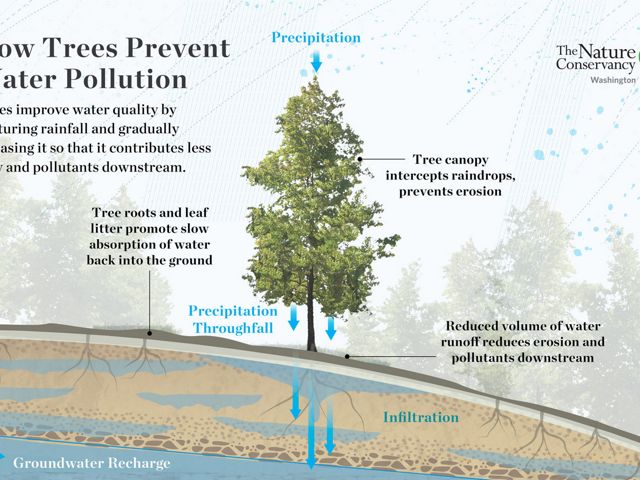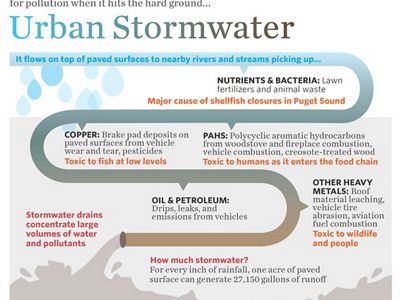

The trees we walk by in our cities and towns provide a wide array of benefits — beauty, habitat for our animals and cleaning the air we breathe. But one benefit is often overlooked: how trees help ensure the rain from our sky does not become stormwater runoff that harms our creeks, waterways and wildlife.

The primary benefit from these urban trees is from the prevention of water pollution through reducing the amount of rain that falls directly on impervious urban surfaces, picking up pollutants and carrying them swiftly to streams, rivers and marine ecosystems. When water hits leaves instead of pavement — called interception — more of it can be detained and gradually released through evaporation and transpiration.
For the water that hits the ground, the tree canopy provides shade that reduces the temperature of the water flowing into our streams and waterways. And trees’ roots help the water infiltrate the ground. From there, soils filter out nutrients and this water flows to recharge the groundwater.
These trees are powerhouses, reducing stormwater pollution and so much more.